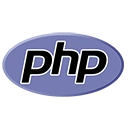PHP namespaces are a feature that allows you to organize and group your code, preventing naming conflicts and making your code more maintainable. In this guide, we'll introduce you to PHP namespaces, explain their importance, and show you how to use them effectively.
1. Introduction to Namespaces
Let's begin by understanding what namespaces are, why they are important, and how they can help you organize your PHP code.
2. Declaring and Using Namespaces
Learn how to declare and use namespaces in your PHP code, and how to prevent naming conflicts.
namespace MyNamespace;
class MyClass {
public function sayHello() {
echo 'Hello from MyNamespace\MyClass';
}
}
$obj = new MyClass();
$obj->sayHello();
?> 3. Aliasing and Importing
Explore aliasing and importing in PHP namespaces, allowing you to simplify the usage of classes and functions from other namespaces.
use MyNamespace\MyClass as MyAlias;
$obj = new MyAlias();
$obj->sayHello();
?> 4. Global Namespace and Best Practices
Understand the global namespace and best practices for structuring your code with namespaces, including naming conventions and organization.
5. Namespace Autoloading
Learn about autoloading and how it simplifies the inclusion of classes in your code, making it more efficient and manageable.
6. Conclusion
PHP namespaces provide an essential tool for organizing your code, preventing naming clashes, and enhancing code maintainability. By following best practices and understanding namespace concepts, you can create well-structured and organized PHP applications.
To become proficient in using namespaces in PHP, practice structuring your code into meaningful namespaces, use autoloading, and ensure that your code is well-organized and easy to maintain.

